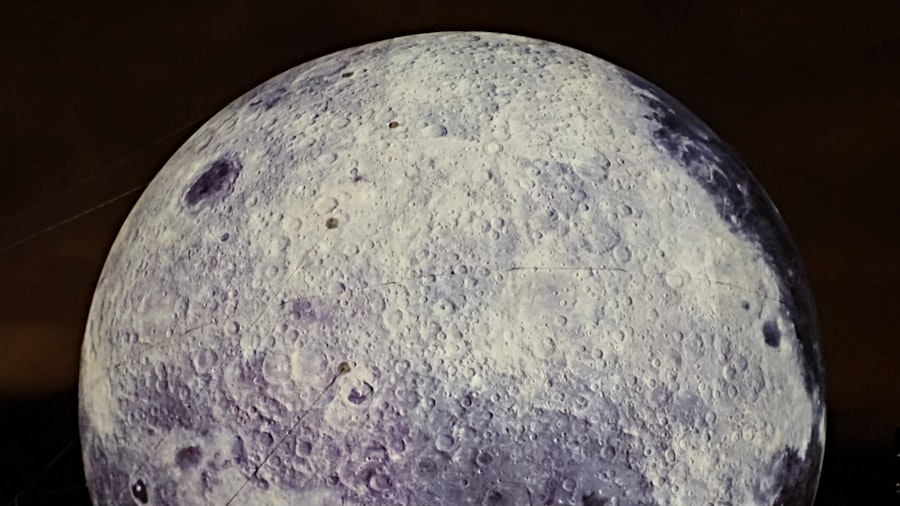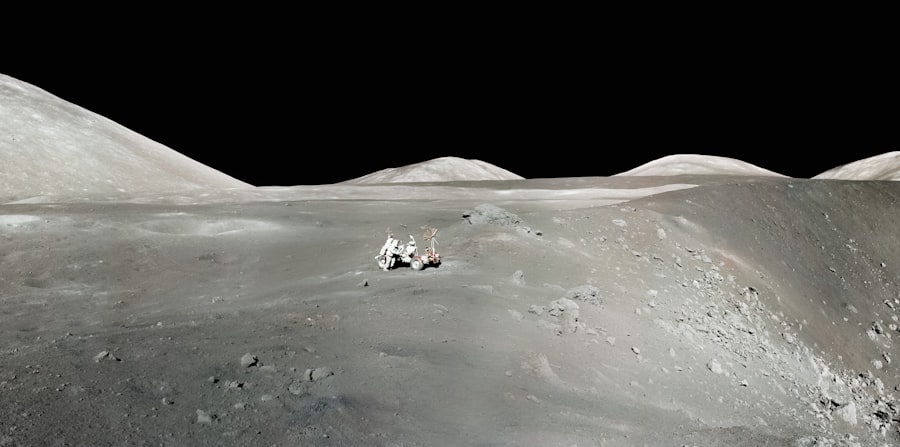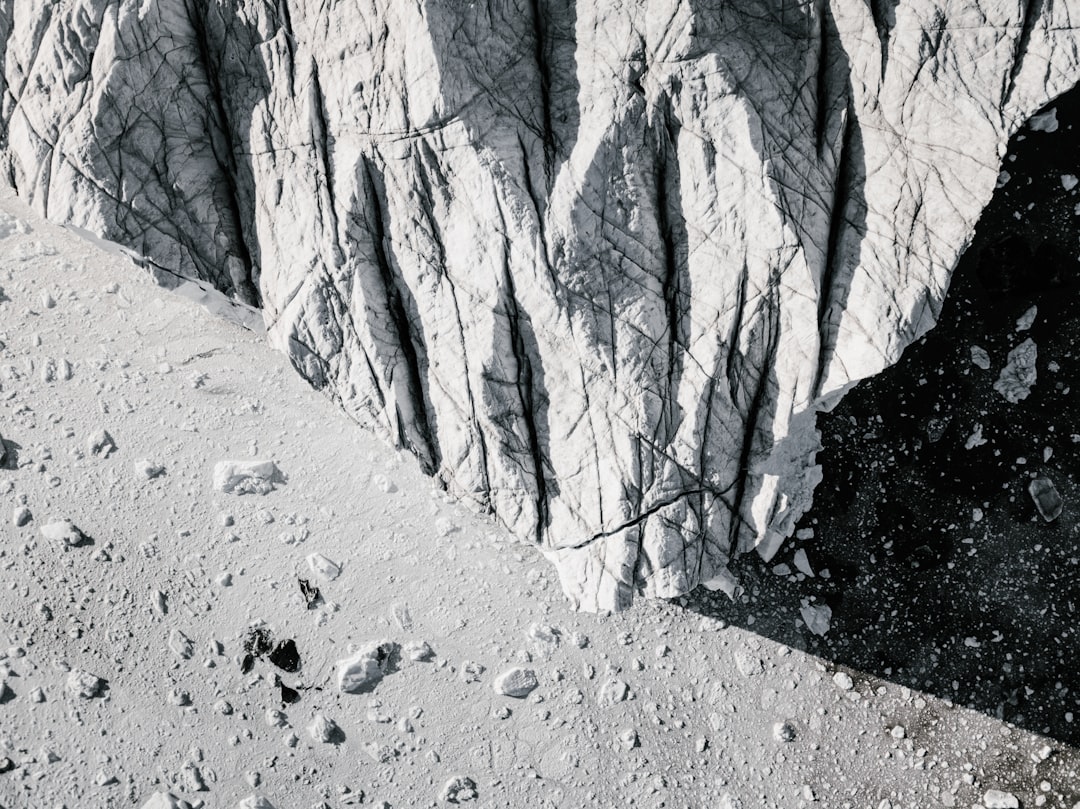China’s ambitions in space exploration have taken a significant turn with its focus on lunar resource extraction. As the nation continues to assert itself as a global leader in technology and innovation, its strategy for tapping into the Moon’s resources reflects a broader vision of sustainable development and economic growth. The Chinese government has recognized the Moon not merely as a celestial body but as a potential treasure trove of materials that could support both terrestrial and extraterrestrial endeavors.
This strategic pivot towards the Moon is not only about scientific exploration but also about securing vital resources that could bolster China’s position in the global arena. The lunar resource extraction strategy is part of China’s broader space program, which has seen remarkable advancements over the past few decades. With successful missions such as the Chang’e series, which includes landers and rovers, China has demonstrated its capability to explore and utilize lunar resources.
The nation’s commitment to this strategy is underscored by its long-term vision, which aims to establish a sustainable presence on the Moon and eventually facilitate human exploration of Mars. As China embarks on this ambitious journey, it faces both opportunities and challenges that will shape the future of its lunar endeavors.
Key Takeaways
- China is actively pursuing a lunar resource extraction strategy to secure valuable resources from the moon.
- Lunar resources are important for China’s long-term space exploration and economic development goals.
- China’s goals for lunar resource extraction include obtaining helium-3, water ice, and rare earth elements for energy and manufacturing purposes.
- Challenges of lunar resource extraction include technological limitations, environmental concerns, and international competition.
- China has made significant technological advances in lunar resource extraction, including the successful landing of the Chang’e-5 mission to collect lunar samples.
The Importance of Lunar Resources for China
Lunar resources hold immense significance for China, primarily due to their potential applications in various sectors. The Moon is rich in essential materials such as helium-3, rare earth elements, and water ice, all of which can play a crucial role in energy production and technological advancement. Helium-3, for instance, is considered a promising fuel for nuclear fusion, which could provide a nearly limitless source of clean energy.
By harnessing these resources, China aims to reduce its dependence on terrestrial energy sources and enhance its energy security. Moreover, the extraction of lunar resources aligns with China’s goals of advancing its technological capabilities. The nation seeks to position itself at the forefront of space technology, and lunar mining could serve as a catalyst for innovation in robotics, automation, and materials science.
The development of new technologies for extracting and processing lunar materials could have far-reaching implications, not only for space exploration but also for industries on Earth. As China invests in research and development in this area, it stands to gain a competitive edge in the global market for advanced technologies.
China’s Goals and Objectives for Lunar Resource Extraction

China’s lunar resource extraction strategy is driven by a set of clear goals and objectives that reflect its aspirations for leadership in space exploration. One of the primary objectives is to establish a sustainable human presence on the Moon by the 2030s. This involves not only conducting scientific research but also developing the infrastructure necessary for long-term habitation and resource utilization.
In addition to establishing a presence on the Moon, China seeks to develop the technological capabilities required for efficient resource extraction. This includes investing in advanced robotics, autonomous systems, and innovative mining techniques that can operate in the harsh lunar environment.
By achieving these technological milestones, China hopes to demonstrate its prowess in space exploration while also contributing to global knowledge in this field. Ultimately, these goals reflect China’s ambition to become a dominant player in the new space economy.
The Challenges of Lunar Resource Extraction
| Challenges | Description |
|---|---|
| Low gravity | The moon’s low gravity makes it difficult to operate heavy machinery and extract resources efficiently. |
| Extreme temperatures | The moon experiences extreme temperature variations, which can affect the performance of equipment and machinery. |
| Lack of atmosphere | The moon’s lack of atmosphere makes it challenging to protect equipment from micrometeoroids and solar radiation. |
| Transportation | Transporting extracted resources from the moon to Earth or other locations is a complex and costly endeavor. |
| Regulatory issues | There are currently no international regulations in place for lunar resource extraction, posing legal and ethical challenges. |
Despite its ambitious plans, China faces numerous challenges in its quest for lunar resource extraction. One of the most significant hurdles is the technical complexity involved in mining and processing materials on the Moon. The lunar environment presents unique difficulties, including extreme temperatures, low gravity, and a lack of atmosphere.
These factors complicate the design and operation of mining equipment, necessitating innovative solutions that can withstand harsh conditions while remaining efficient. Additionally, the financial investment required for lunar resource extraction is substantial. Developing the necessary technology, launching missions, and establishing infrastructure on the Moon demand significant funding and resources.
As China allocates budgetary priorities towards its space program, it must balance these investments with other pressing domestic needs. Furthermore, international competition for lunar resources adds another layer of complexity; as other nations ramp up their own lunar ambitions, China must navigate geopolitical dynamics while pursuing its objectives.
China’s Technological Advances in Lunar Resource Extraction
China has made remarkable strides in developing technologies for lunar resource extraction, positioning itself as a leader in this emerging field. The Chang’e missions have provided valuable data about the Moon’s surface composition and potential resource deposits. These missions have also tested various technologies that will be crucial for future extraction efforts, including landers equipped with advanced drilling systems and rovers capable of navigating challenging terrain.
Moreover, China’s investment in research and development has led to breakthroughs in robotics and automation that are essential for lunar mining operations. The use of autonomous systems can significantly enhance efficiency and safety during extraction processes. By leveraging artificial intelligence and machine learning, China aims to optimize resource identification and extraction techniques, reducing the risks associated with human involvement in hazardous environments.
These technological advances not only bolster China’s lunar ambitions but also contribute to its overall technological prowess.
International Collaboration and Competition in Lunar Resource Extraction

As nations around the world increasingly turn their attention to lunar resource extraction, international collaboration and competition are becoming defining features of this new frontier. While China has made significant progress independently, it recognizes the potential benefits of collaborating with other countries and organizations in this endeavor. Joint missions and partnerships can facilitate knowledge sharing, reduce costs, and enhance overall capabilities in lunar exploration.
However, competition is also intensifying as countries like the United States, Russia, India, and members of the European Space Agency ramp up their own lunar initiatives. This competitive landscape raises questions about resource ownership and governance on the Moon. As nations vie for access to valuable materials, establishing frameworks for cooperation while addressing potential conflicts will be crucial.
China’s approach will likely involve balancing collaboration with assertive strategies to secure its interests in this rapidly evolving arena.
Environmental and Ethical Considerations in Lunar Resource Extraction
The pursuit of lunar resource extraction raises important environmental and ethical considerations that cannot be overlooked. As nations explore the Moon’s resources, they must grapple with the potential impact on its pristine environment. The Moon’s surface is a unique ecosystem that has remained largely untouched by human activity; any mining operations could disrupt this delicate balance.
Therefore, it is imperative for China and other nations to develop sustainable practices that minimize environmental degradation. Ethical considerations also come into play when discussing ownership and exploitation of lunar resources. The Outer Space Treaty of 1967 established that celestial bodies should be used for peaceful purposes and that no nation can claim sovereignty over them.
As China advances its lunar ambitions, it must navigate these legal frameworks while ensuring that its actions align with international norms regarding space exploration. Engaging in transparent dialogue with other nations will be essential to address these ethical dilemmas.
Potential Economic Benefits of Lunar Resource Extraction for China
The economic implications of lunar resource extraction are profound for China. By tapping into the Moon’s resources, China could potentially unlock new avenues for economic growth and technological advancement. The extraction of valuable materials such as rare earth elements could bolster domestic industries that rely on these resources for manufacturing high-tech products.
This would not only enhance China’s self-sufficiency but also position it as a key player in global supply chains. Furthermore, the development of a lunar economy could create new job opportunities within China’s burgeoning space sector. As research institutions and private companies engage in lunar exploration and resource extraction efforts, they will require skilled professionals across various fields, from engineering to environmental science.
This growth could stimulate innovation and entrepreneurship within China’s economy while fostering international partnerships that further enhance its global standing.
The Role of Government Policy in China’s Lunar Resource Extraction Strategy
Government policy plays a pivotal role in shaping China’s lunar resource extraction strategy. The Chinese government has prioritized space exploration as part of its national development agenda, allocating significant funding and resources to support ambitious projects like the Chang’e missions. This commitment reflects a broader recognition of the strategic importance of space exploration for national security, economic growth, and technological advancement.
Moreover, government policies are instrumental in fostering collaboration between public institutions and private enterprises within China’s space sector. By encouraging partnerships between state-owned enterprises and private companies, the government aims to leverage diverse expertise and resources to accelerate progress in lunar exploration. Additionally, regulatory frameworks will need to evolve to address emerging challenges related to resource ownership and environmental protection as China continues to advance its lunar ambitions.
Future Prospects and Developments in China’s Lunar Resource Extraction Strategy
Looking ahead, China’s lunar resource extraction strategy is poised for significant developments as technological advancements continue to unfold. The upcoming Chang’e missions are expected to provide critical insights into potential mining sites while testing new technologies designed for resource extraction. These missions will serve as stepping stones toward establishing a sustainable human presence on the Moon by the end of this decade.
Furthermore, as international interest in lunar resources grows, China may seek to expand its collaborative efforts with other nations while simultaneously asserting its interests in this competitive landscape. The establishment of international agreements governing lunar resource utilization could pave the way for cooperative ventures that benefit all parties involved. Ultimately, China’s ability to navigate these complexities will determine its success in realizing its ambitious lunar goals.
The Implications of China’s Lunar Resource Extraction Strategy
China’s lunar resource extraction strategy carries profound implications not only for the nation itself but also for the global landscape of space exploration. As China positions itself as a leader in this emerging field, it must balance its ambitions with ethical considerations regarding environmental protection and international cooperation. The successful implementation of its strategy could yield significant economic benefits while advancing technological innovation.
In conclusion, China’s pursuit of lunar resources represents a pivotal moment in humanity’s exploration of outer space. As nations grapple with questions surrounding ownership, governance, and sustainability on celestial bodies, China’s approach will likely influence future policies and practices within the realm of space exploration. The unfolding narrative surrounding lunar resource extraction will shape not only China’s trajectory but also the broader dynamics of international relations in an increasingly interconnected world.
China’s ambitious strategy for lunar resource extraction is a significant step in the global race for space resources, aiming to establish a sustainable presence on the Moon. This strategy involves developing advanced technologies for mining and processing lunar materials, which could potentially support future space missions and provide valuable resources for Earth. For more insights into China’s lunar ambitions and the broader implications of space resource extraction, you can read a related article on this topic by visiting this page.
WATCH THIS! 🚀 Why The Moon Is The Next Battlefield: The Geopolitics of Cislunar Space
FAQs
What is China’s strategy for lunar resource extraction?
China’s strategy for lunar resource extraction involves sending robotic missions to the moon to prospect for and eventually extract resources such as water ice, rare earth elements, and other valuable minerals.
Why is China interested in lunar resource extraction?
China is interested in lunar resource extraction for several reasons, including the potential for using lunar resources to support future human space exploration missions, as well as the economic potential of mining and utilizing lunar resources.
What are the potential benefits of lunar resource extraction for China?
The potential benefits of lunar resource extraction for China include the ability to establish a sustainable presence on the moon, reduce the cost of space exploration missions, and gain access to valuable resources for use on Earth.
What are the challenges of lunar resource extraction for China?
The challenges of lunar resource extraction for China include the technical difficulties of mining and processing resources in the lunar environment, as well as the need to develop new technologies and infrastructure for lunar resource utilization.
What are China’s plans for lunar resource extraction in the near future?
China’s plans for lunar resource extraction in the near future include sending robotic missions to prospect for resources, conducting experiments to demonstrate the feasibility of resource extraction, and eventually establishing a sustainable lunar resource utilization infrastructure.
